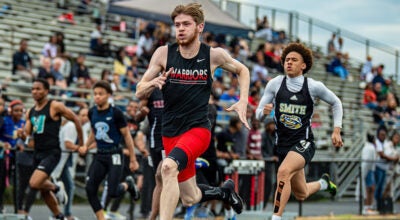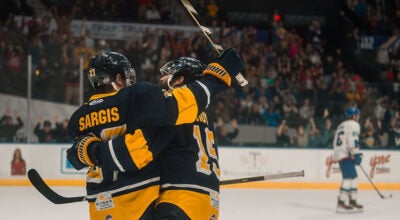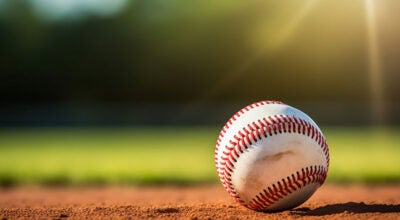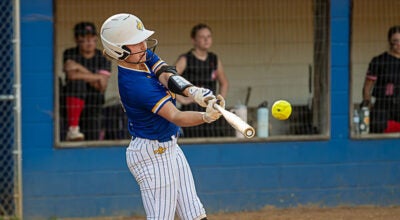Beating the Heat
Published 7:54 pm Saturday, August 8, 2009
Two-a-days in brutal, testing heat and humidity is what plenty of high school football stories and traditions are made of.
In Suffolk’s usual August heat and humidity, to a certain extent it must go with the territory. There are smarter, more precise, rules and restrictions placed on teams now than in years past, plus coaches are more aware of the potential danger of extreme heat.
Nansemond-Suffolk Academy’s head football coach, Kevin Allen, is new to the Saints and new as a head coach, but he’s hardly new to football as he played collegiately at Virginia State and professionally in the Canadian Football League and the Arena Football League.
He’s seen good ideas and bad ideas when it comes to early-season, summer practices. For the most part, says Allen, a little common sense is enough for football teams to avoid the worst heat of August.
“We’re not going to be out there at 1 or 2 p.m. Most of our games are at night anyway,” said Allen.
Allen can recount playing for or coaching with coaches who practiced in the middle of the day during the preseason.
“You’re kind of asking for practice to be cancelled of brought inside if you do that, so what’s the point?” said Allen.
“It won’t be dark until about 8 p.m., so we can use that time.”
The Virginia High School League (Lakeland, King’s Fork and Nansemond River) follows restrictions based largely on a calculation called “humiture”.
Trainers at each school use that number, which is a formula combining air temperature and humidity, or can use their judgment at any time, to tell coaches to have increased breaks during practices, recommend teams practice without pads or helmets or call off outdoor practices all together.
Each August, there are usually a couple days when football, field hockey or golf practices or games are postponed.
The magic humiture number is 105. At 105, the VHSL recommends all outdoor athletic activities be stopped. For example, a temperature of 100 with 30 percent humidity equals 105 on the humiture chart. Ninety-four degrees and 50 percent humidity is a humiture of 105 and 84 degrees with 100 percent humidity equals 105.
Rules are in place at the Pop Warner level as well. Regardless of the temperature, for every hour of practice coaches must give players a 15-minute break said president of the Suffolk Steelers, Fred Greene.
“Yesterday (Wednesday) it was 96 degrees, so we cut back some on the running and the drills were a little shorter,” said Greene.
When the heat index reaches a certain number, Suffolk’s Parks and Recreation Department, which controls the athletic fields at John F. Kennedy, calls the ICAA leaders and coaches to tell them to call off or delay practices.
It can be tougher on the Pop Warner teams since games are played, not at night like most high school games, but on Saturday morning or afternoon.
“We stress to our kids to get a lot of fluids into them the day before (a game),” said Greene.
“We try to get them to stop with the Kool-Aid and soda the day before and start drinking water. It can’t be the same day,” said Greene.
Anytime, during games or practices, a player says he wants a water break, said Greene, it’s a league policy the coach must let him get water.
Back to the high school level, Allen’s coaching philosophy leads him in a little different direction as well. He says he will be putting a priority on learning the Xs and Os of the game, and execution, for the Saints in his first season.
“I’m big on you don’t have to hit all day, every day in order to be at your best.”
Shorter, but more intense, practices play a role in keeping players conditioned while not necessarily doing a lot of conditioning said Allen.
“If we do everything at full speed, we’ll be in shape anyway. Sure, we’ll add a little conditioning at the end of practices, but if we have a good practice you don’t need much of it,” said Allen. Either before or after practice on the field, “time at the board”, the chalkboard, is just as important to Allen.
“Trainers go a great job keeping us aware,” said Allen, who used to be a personal trainer himself. “We’ve learned once you have someone doing cardio for 45 minutes to an hour, after that your brain tends to float somewhere else.”
“If a kid is super-hot, he’s probably not going to be able to focus on what you’re teaching anyway,” said Allen.






